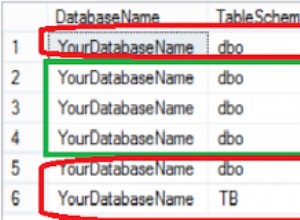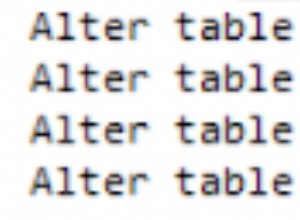Puede haber soluciones más simples para hacer esto, pero aquí hay una forma.
Estructura de la mesa
create table Locations(LocationID int, Location varchar(50))
create table OtherTable(ID int, Locations varchar(max))
Datos de prueba
insert into Locations values(1, 'Location <1>')
insert into Locations values(2, 'Location <2>')
insert into Locations values(3, 'Location <3>')
insert into Locations values(4, 'Location <4>')
insert into Locations values(5, 'Location <5>')
insert into OtherTable values (1, '')
insert into OtherTable values (2, '2')
insert into OtherTable values (3, '1, 3 ,5')
Consulta
;with cte as
(
select
T.ID,
coalesce(L.Location, '') as Location
from OtherTable as T
cross apply
(select cast('<r>'+replace(T.Locations, ',', '</r><r>')+'</r>' as xml)) LocXML(XMLCol)
cross apply
LocXML.XMLCol.nodes('r') LocID(IDCol)
left outer join Locations as L
on L.LocationID = LocID.IDCol.value('.', 'int')
)
select
C1.ID,
stuff((select ', '+C2.Location
from cte as C2
where C1.ID = C2.ID
for xml path(''), type).value('text()[1]', 'nvarchar(max)'), 1, 2, '') as Locations
from cte as C1
group by C1.ID
Resultado
ID Locations
--- ----------------------------------------
1
2 Location <2>
3 Location <1>, Location <3>, Location <5>




